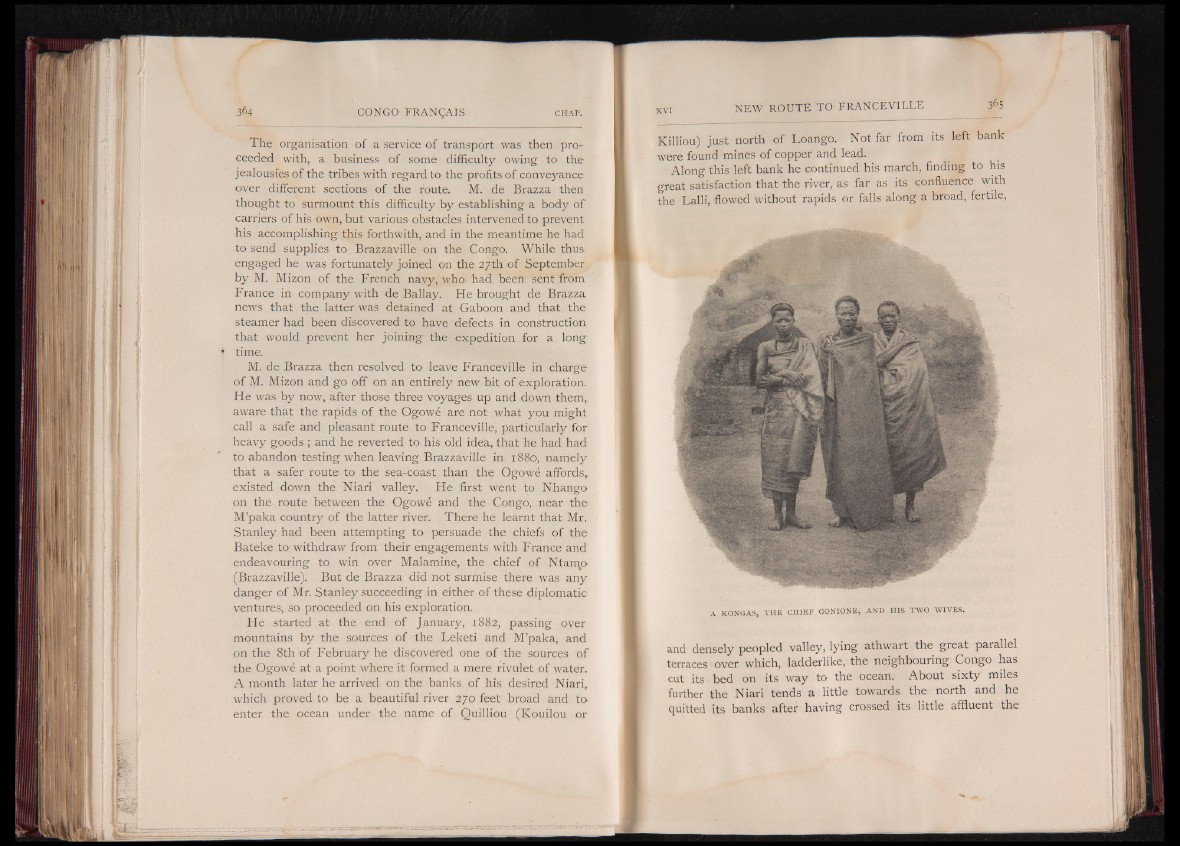
The organisation of a service of transport was then proceeded
with, a business of some difficulty owing to the
jealousies of the tribes with regard to the profits of conveyance
over different sections of the route. M. de Brazza then
thought to surmount this difficulty by establishing a body of
carriers of his own, but various obstacles intervened to prevent
his accomplishing this forthwith, and in the meantime he had
to send supplies to , Brazzaville on the Congo. While thus
engaged he was fortunately joined on the 27th of September
by M. Mizon of the French navy, who had been sent from
France in company with de Ballay. He brought de Brazza
news that the latter was detained at Gaboon and that the
steamer had been discovered to have defects in construction
that would prevent her joining the expedition for a long
♦ time.
M. de Brazza then resolved to leave Franeeville in charoge
of M. Mizon and go off on an entirely new bit of exploration.
He was by now, after those three voyages up and down them,
aware that the rapids of the Ogowd are not what you might
call a safe and pleasant route to Franeeville, particularly for
heavy goods ; and he reverted to his old idea, that he had had
to abandon testing when leaving Brazzaville in 1880, namely
that a safer route to the sea-coast than the Ogowe affords,
existed down the Niari valley. He first went to Nhango
on the route between the Ogowe and the Congo, near the
M’paka country of the latter river. There he learnt that Mr.
Stanley had been attempting to persuade the chiefs of the
Bateke to withdraw from their engagements with France and
endeavouring to win over Malamine, the chief of Ntamp
(Brazzaville). But de Brazza did not surmise there was any
danger of Mr. Stanley succeeding in either of these diplomatic:
ventures, so proceeded on his exploration.
He started at the end of January, 1882, passing over
mountains by the sources of the Leketi and M’paka, and
on the 8th of February he discovered one of the sources o f
the Ogowe at a point where it formed a mere rivulet of water.
A month later he arrived on the banks of his desired Niari,
.which proved to be a beautiful river 270 feet broad and to
enter the ocean under the name of Quilliou (Kouilou or
Killiou) just north of Loango. Not far from its left bank
were found mines of copper and lead.
Along this left bank he continued his march, finding to his
great satisfaction that the river, as far as its confluence with
the Lalli, flowed without rapids or falls along a broad, fertile,
m
A KONGAS, THE CHIEF GONIONE, AND HIS TWO WIVES.
and densely peopled valley, lying athwart the great parallel
terraces over which, ladderlike, the neighbouring Congo has
cut its bed on its way to the ocean. About sixty miles
further the Niari tends a little towards the north and he
quitted its banks after having crossed its little affluent the